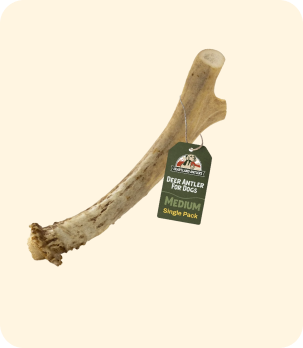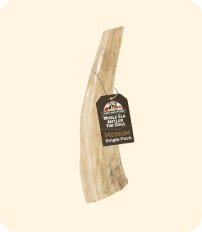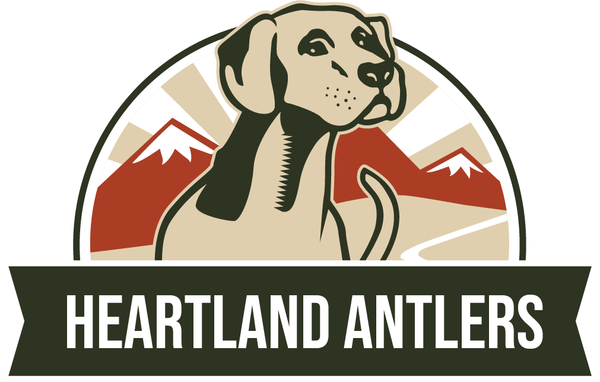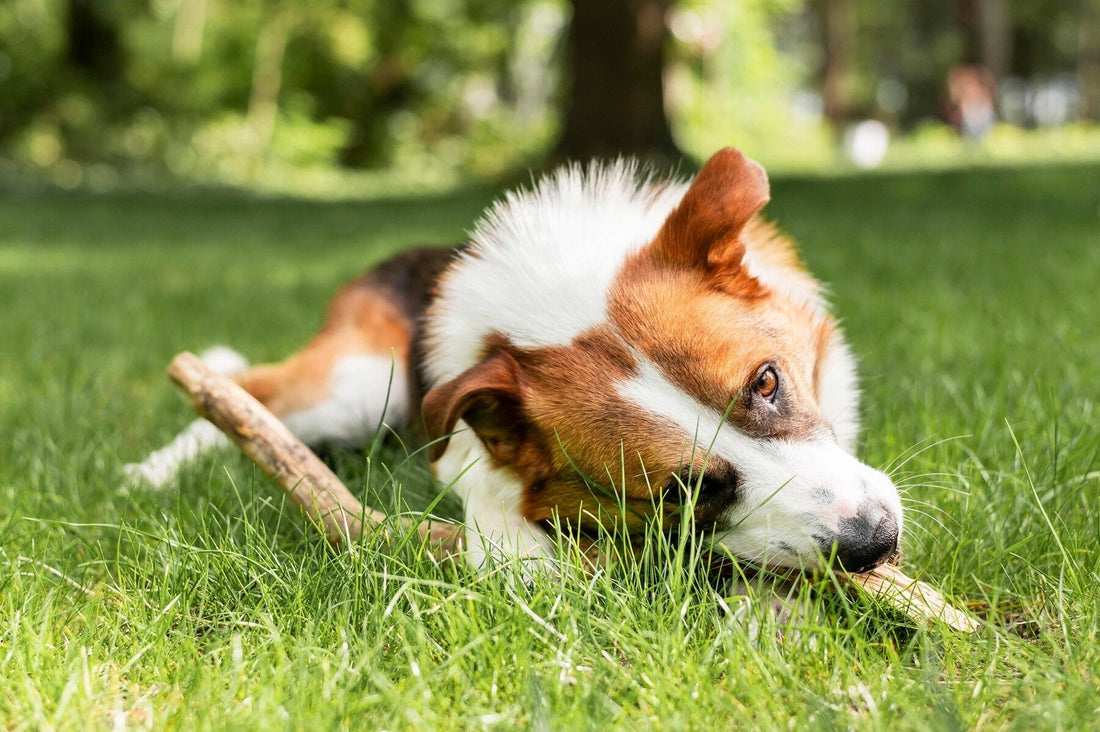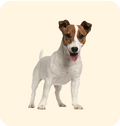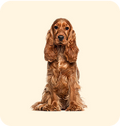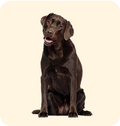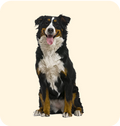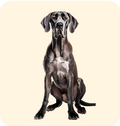As a dog owner, you want the best for your furry friend—especially when it comes to their chewing habits. Antler chews have become a popular choice for pet parents seeking natural, long-lasting, and safe options for their dogs.
However, like any chew, it’s essential to understand how to use them safely. In this guide, we’ll dive into everything you need to know about antler chew safety, including safe chewing practices, supervision tips, and how to identify potential hazards.
Why Antler Chews Are a Popular Choice for Dogs

Antler chews, made from naturally shed deer and elk antlers, are a favorite among dog owners for several reasons:
-
Natural and Sustainable: Unlike synthetic chews, antlers are 100% natural and eco-friendly.
-
Long-Lasting: They are incredibly durable, making them ideal for aggressive chewers.
-
Dental Health Benefits: Chewing on antlers helps reduce plaque and tartar buildup, promoting better oral hygiene.
But with these benefits come responsibilities. Ensuring your dog’s safety while they enjoy their antler chew is crucial. Let’s explore how to make antler chews a safe and enjoyable experience for your pup.
What Makes Antler Chews Safe for Dogs?
Antler chews are naturally shed by deer and elk, making them a safe and sustainable option. Here’s why they stand out:
-
No Artificial Additives: Unlike many commercial chews, antlers are free from chemicals, preservatives, and artificial flavors.
-
Rich in Nutrients: They contain essential minerals like calcium and phosphorus, which are beneficial for your dog’s health.
-
Durable and Splinter-Resistant: Antlers are less likely to splinter compared to bones, reducing the risk of injury.
However, even the safest chews require proper supervision and usage. Let’s discuss how to choose the right antler chew for your dog.
Choosing the Right Antler Chew for Your Dog
Not all antler chews are created equal. To ensure safety, consider the following factors:
-
Size Matters: Choose an antler chew that’s appropriate for your dog’s size. A chew that’s too small can be a choking hazard, while one that’s too large may be difficult for your dog to enjoy.
-
Split vs. Whole Antlers: Split antlers are ideal for dogs new to antler chews, as they expose the soft marrow, making it easier to chew. Whole antlers are better for aggressive chewers who need a more durable option.
- Chewing Habits: Consider your dog’s chewing style. If they’re a heavy chewer, opt for a denser elk antler. For moderate chewers, deer antlers are a great choice.
Safe Chewing Practices: Tips for Dog Owners

Even the safest chews require responsible usage. Follow these tips to ensure your dog’s safety:
-
Supervise Chew Sessions: Always keep an eye on your dog while they’re chewing. This helps you intervene if they bite off a large piece or show signs of discomfort.
-
Set Time Limits: Limit chew sessions to 1-2 hours at a time to prevent overuse and potential tooth damage.
-
Rotate Chews: Offer different types of chews to keep your dog engaged and reduce wear on their teeth.
Potential Hazards and How to Avoid Them
While antler chews are generally safe, there are a few risks to be aware of:
-
Tooth Fractures: Antlers are extremely hard, which can lead to cracked or broken teeth, especially in aggressive chewers. To minimize this risk, choose the right size and type of antler for your dog.
-
Choking Hazards: If your dog bites off a large piece, it could become a choking hazard. Always inspect the chew for sharp edges or small fragments and replace it if necessary.
-
Digestive Issues: While antlers are not meant to be ingested, small pieces can sometimes be swallowed. Monitor your dog for signs of digestive discomfort, such as vomiting or diarrhea.
How to Introduce Antler Chews to Your Dog

Introducing a new chew to your dog requires patience and care. Follow these steps:
-
Start Slowly: Give your dog the antler chew for short periods and observe their reaction.
-
Encourage Interest: If your dog seems unsure, rub a bit of peanut butter on the chew to make it more appealing.
- Monitor Progress: Watch how your dog chews and adjust the type or size of the antler as needed.
Frequently Asked Questions About Antler Chew Safety
Are antler chews safe for puppies?
Antler chews are generally safe for puppies, but it’s best to wait until their adult teeth have fully developed (around 6 months old). Always supervise puppies during chew sessions.
Can aggressive chewers use antler chews?
Yes! Elk antlers are particularly durable and ideal for aggressive chewers. However, monitor your dog closely to prevent tooth damage.
How long do antler chews last?
Depending on your dog’s chewing habits, antler chews can last weeks or even months. Replace the chew once it becomes small enough to swallow.
Why Choose Heartland Antlers for Your Dog’s Chewing Needs?
At Heartland Antlers, we’re committed to providing your dog with the safest, highest-quality antler chews. Our naturally shed deer and elk antlers are sourced responsibly and carefully inspected to ensure they meet our strict safety standards. With Heartland Antlers, you can trust that you’re giving your dog a chew that’s both enjoyable and safe.
Prioritizing Safety for Your Dog’s Chewing Habits
Antler chews are a fantastic natural option for keeping your dog entertained and promoting dental health. By following the safety tips outlined in this guide, you can ensure your dog enjoys their chew without any risks. Remember, supervision and proper usage are key to a safe chewing experience.
Ready to provide your dog with a safe, natural chewing experience? Shop our premium selection of deer and elk antler chews at Heartland Antlers today! Your dog’s happiness and safety are our top priorities.
